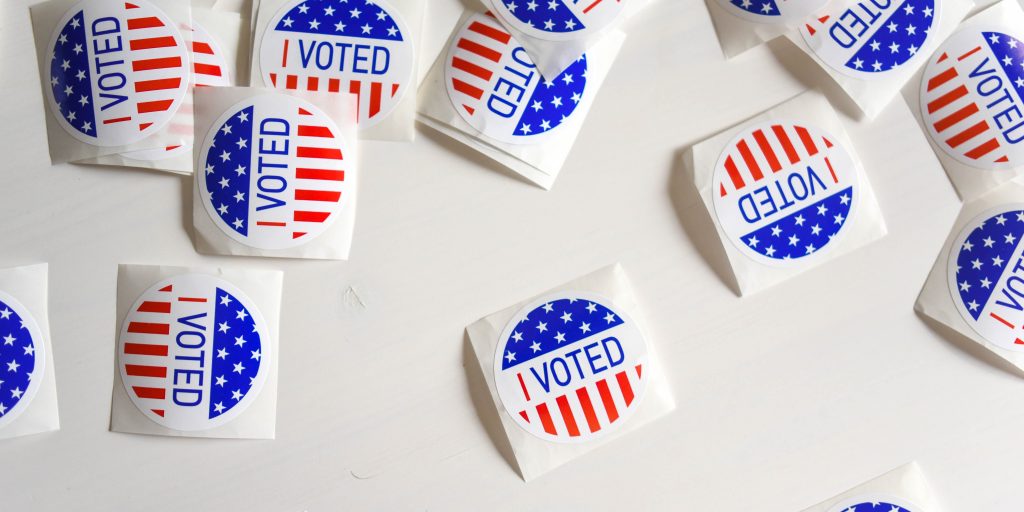A paper trail can help protect the sanctity of voting in U.S. elections
As the 2020 election cycle revs up, voting security remains a big concern for voters and government officials across the country. In recent years, many security experts have called for major elections to have a physical paper trail as a backup to electronic records so a trustworthy audit can be performed. This quest for stronger voter security and traceability is driving a second look at paper as part of voting election system upgrades.
To help states and counties upgrade to more modern and secure voting machines as well as safeguard their election data, Congress passed the 2018 Help America Vote Act (HAVA) and earmarked $380 million for voting system and security upgrades. According to the U.S. Election Assistance Commission, these unused federal funds are still available. This bill was passed after former Homeland Security Secretary Kirstjen Nielsen warned it is a “national security concern” that U.S. elections can’t be audited without paper ballots.
With the public and election officials demanding change, state and local municipalities nationwide are adopting a new level of vigor and dedication to ensure the sanctity of the vote. This is also fueling growing demand for technical innovation within voting systems that makes voting more straightforward and equitable so that managing elections is more transparent.
Better Balloting Systems
Today there are modern, secure and versatile new voting systems available that enable a move beyond older and less secure technologies. These new systems offer compact and flexible platforms that can handle all types of voting: paper, electronic and vote-by-mail. These systems typically provide easy-to-read, anonymous, printed vote records as well as ADA-compliant accessible interfaces and can be used for early voting and in voting centers.
The greatest combination of flexibility, security and accountability can be found in a two-part system that combines the ease of a touchscreen with the comfort of a 100 percent human-readable, full-size paper ballot. Electronic voting interfaces enable last-minute corrections to be made, avoiding expensive reprints and will not allow a mismarked ballot (e.g. overvotes, stray marks, etc.), eliminating any questions about voter intent.
The Right Touch (screen)
The latest approach to touchscreen voting presents the ballot on screen but does not record the votes electronically. Instead, it pairs a touchscreen display with a compact yet full-size, on-board thermal printer. Upon presenting voting credentials, voters are given a unique numeric access code and a blank ballot sheet.
The code allows the voter to initiate a voting session, in which the voter is guided to insert their blank sheet and then to make selections in the various races and ballot proposals. These are printed out on the sheet with no personally identifiable information and returned to the voter. Once a voter has reviewed the ballot for accuracy, the printed ballot is inserted into a stand-alone vote tallying machine. In just seconds, the tallying unit displays a message that the ballot was accepted, and the votes counted.
To further safeguard the process, the printed ballots are held securely, only accessed for conducting a risk-limiting audit and, if warranted, a full recount.
By merging the convenience and flexibility of a touchscreen display with the assurance of a paper voting record, the system inspires voter confidence.
Securing the Vote, Selecting a System
For municipalities, counties or states with aging systems lacking the latest security and usability features, now is the time to replace them. Here are some things to keep in mind when looking at a change:
For Electoral Security
- Barcodes and QR codes can potentially be edited to encode different information than is displayed, so they cannot be relied upon in an audit. Be sure the system you choose captures voter choices by reading the same words that the voter reads and verifies.
- Make sure the system you select can restrict access to external ports, includes physical intrusion detection, and requires dual-layer authentication.
- Insist on machines with voter-verified, auditable paper records that protect voter identity.
- Ensure the machines are certified by the Election Assistance Commission (EAC), independently tested to ensure compliance with the VVSG (Voluntary Voting System Guideline) standards, and are tested and certified by state-level regulators where appropriate.
For Election Officials
- Select a secure platform that is user-friendly, requiring minimal pre-election configuration.
- Choose a small, easily portable form factor to reduce your storage and transport costs. Ideally, the equipment for a single polling place could fit in the trunk of a car.
- Look for a configuration that allows poll workers to quickly and easily open or close polls and monitor voting devices from one console.
- Be sure the system you select is fully compliant with Federal ADA requirements for accessibility.
- Save money by choosing a thermal system that does not require toner or ink cartridges to print ballots.
For Voter Confidence
- Ensure the system uses a plain language interface based on Design for Democracy standards.
- Printed ballots or voting records must protect the identity of the voter.
- Opt for full-page printing without votes being stored in barcodes or QR codes.
- Voters must be able to verify that their ballot accurately reflects their votes.
- Paper ballots must be secured against tampering and retained for audit and recount purposes.
By taking steps now to tighten security, upgrade equipment and create an auditable, paper-based balloting system, local and state governments can rest assured that their communities will enjoy secure, accurate and reliable elections. In a democracy, every vote must count… and be counted accurately.
Greg O’Connell is the vice president of sales at Brother Mobile Solutions. Jim Canter is the chief technology officer of Hart InterCivic.



















